A true foodie is never afraid to fully immerse themselves in local cuisine experiences when traveling abroad. But there comes the point where we go from weird and wonderful culinary experiences to just plain weird. Have you ever wondered what the weirdest foods are? And what are their names?
Weird foods are more often than not simply different from what you know, but sometimes we can very easily classify them as gross food. Are you an adventurous eater, or would you rather stick to the usual fan favorites at mealtimes? So maybe, you’d have to be a sandwich short of a picnic to try some of these weird dishes – but at least you get to say you’re brave enough to try the world’s weirdest foods. Let’s dive into the weirdest (sometimes) gross foods of the world and their unique names.
Top 13 Weirdest Foods to Try While Traveling
1. Locusts, Israel
When are plagues of locusts not considered a nuisance? When they’re a local delicacy, of course! Well, plagues of anything will always be a nuisance – but at least this one doubles as a crunchy, Kosher snack too. Locusts are the only insect considered Kosher and are a major source of protein – so Israelis kill two birds with one stone by eradicating these pests by eating them. Deep-fried and chocolate-covered locusts are taking the streets by swarm – literally. Will you be brave enough to take a bite? Insects definitely count as some of the weirdest food – but don’t be surprised to find some creepy crawlies on a few menus around the globe.
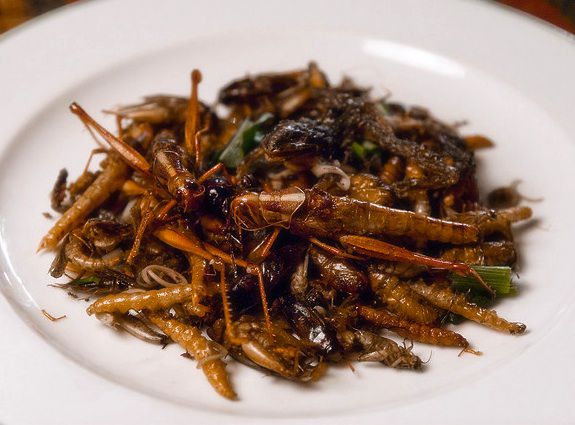
2. Century Egg, China
Also known as hundred-year eggs or thousand-year eggs, century eggs are a Chinese egg-based culinary dish and an established delicacy. Suppose they didn’t want to call it a rotten egg, although essentially that’s what it is. It’s made by preserving duck, chicken, or quail eggs in a mixture of clay, ash, and salt for months at a time – by which point the yolk has turned dark green or grey and has a potent sulfur smell. This might be one of the most bizarre foods you can taste in China.
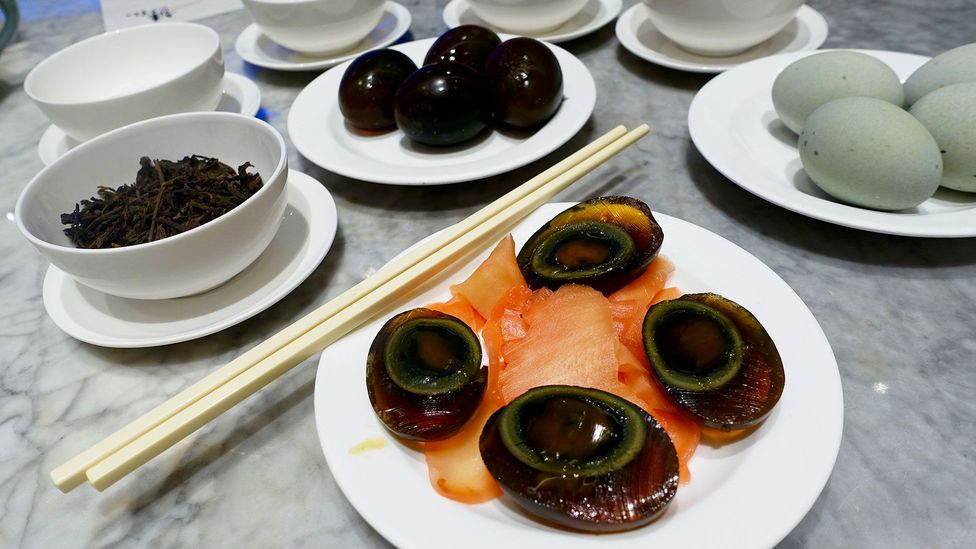
3. Jellied Moose Nose, Canada
In the 1830’s indigenous people across Canada and Alaska would hunt moose for food, and every part of it was used. The recipe was even featured in the 1967 publication of the Northern Cookbook. Besides tracking down a moose, it’s a labor-intensive recipe, too, since the hair inside the moose nose must first be removed before boiling and re-boiling the nose, and finally covering it with a broth which sets into a jelly. Voila: jellied moose nose! It is probably one of the most crazy foods you might taste ever.
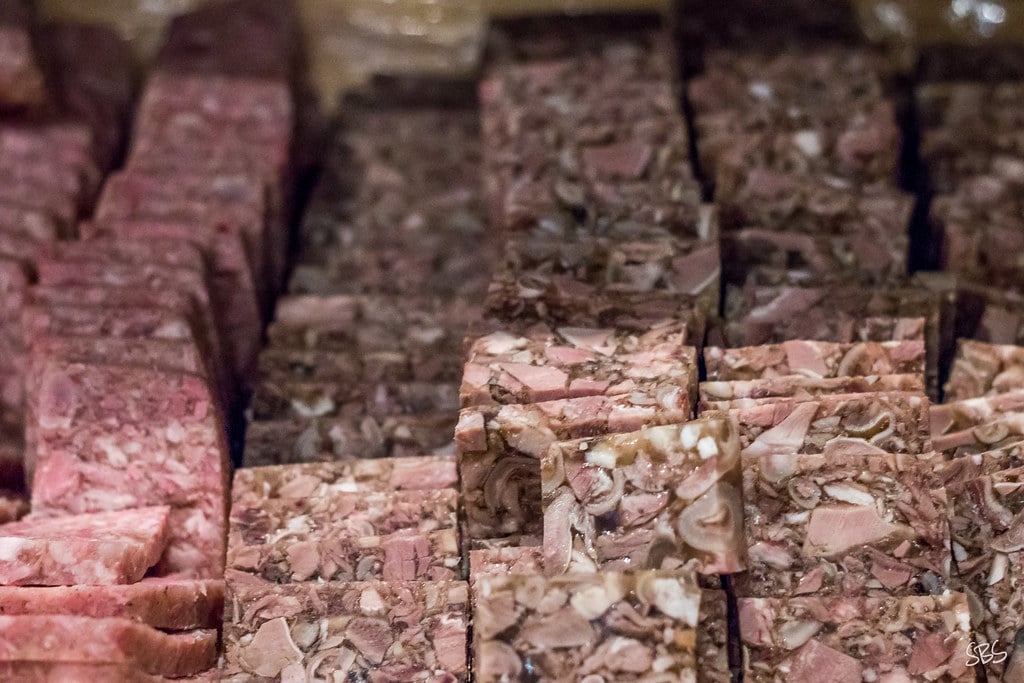
4. Casu Marzu, Italy
Are you a fan of rare cheeses? Great, so what about rare cheeses infested with live maggots? Too far? Well, this next weird food reigns from Italy, so it must be good, right? Also known as “rotten cheese”, this Sardinian delicacy is called casu marzu and is made from Pecorino that is way past its expiration date. Then to make matters even weirder, the larvae of cheese flies (piophila casei) are added to the Pecorina, which then hatch inside, burrow around, digest the fats, and transform the product into a soft creamy cheese. You can choose to enjoy yours with or without the maggots.
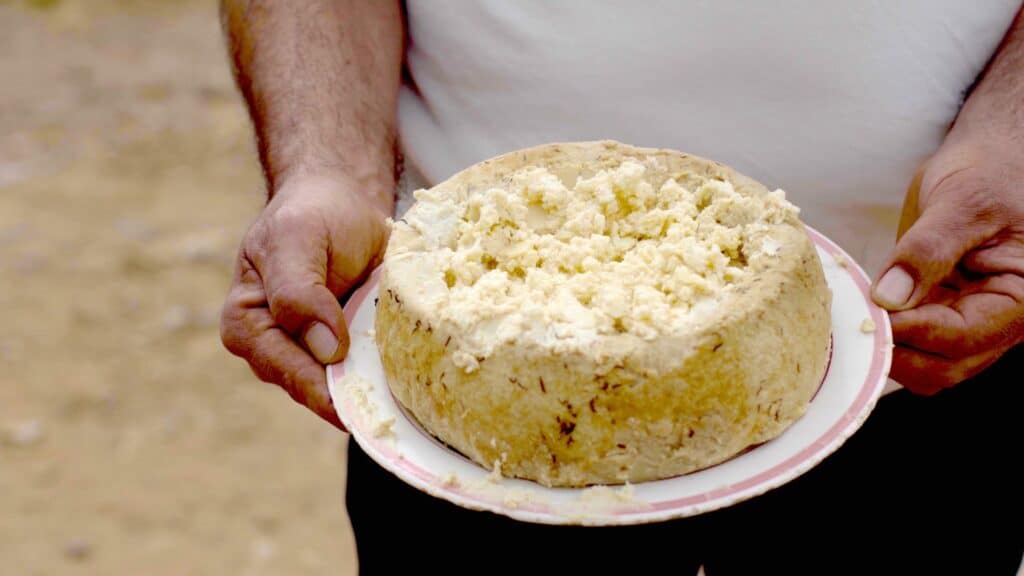
5. Fried Tarantulas, Cambodia
An eight-legged dish with a dark past, starving Cambodians first began eating spiders under the Khmer Rouge regime. Today, the hairy arachnids are still considered a popular snack throughout the country – there’s even one Cambodian town nicknamed Spiderville because the townspeople love eating spiders so much. Apparently, they taste a bit like crab, so perhaps this is a new bugs-as-food trend you can get on board with.
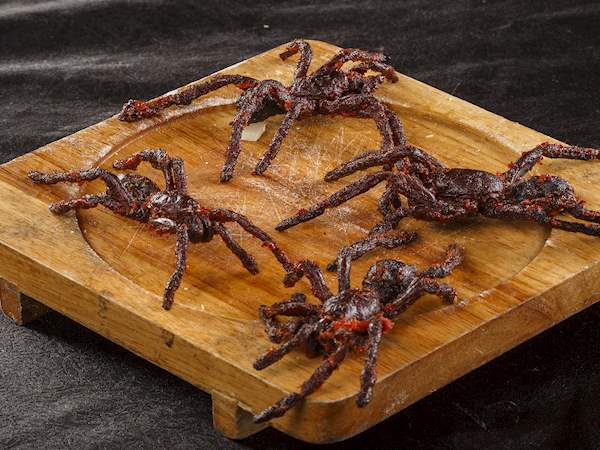
6. Stargazey Pie, England
While this dish may come with a romantic-sounding name, it might not be one that will make an appearance at a date night dinner table. Also known as starry gazey pie, this weird food originates from a Cornish village called Mousehole in England. Traditionally served on the 23rd of December – the tale behind this dish might make it a bit more appetizing. Legend has it, one night in the 16th century, a heroic sailor rowed out one December evening during high storms and returned with a catch big enough to feed starving townsfolk. The Cornish pie is made by baking pilchards, eggs, and potatoes under a pastry crust – the key namesake factor is that the heads of the fish must poke out of the pie.
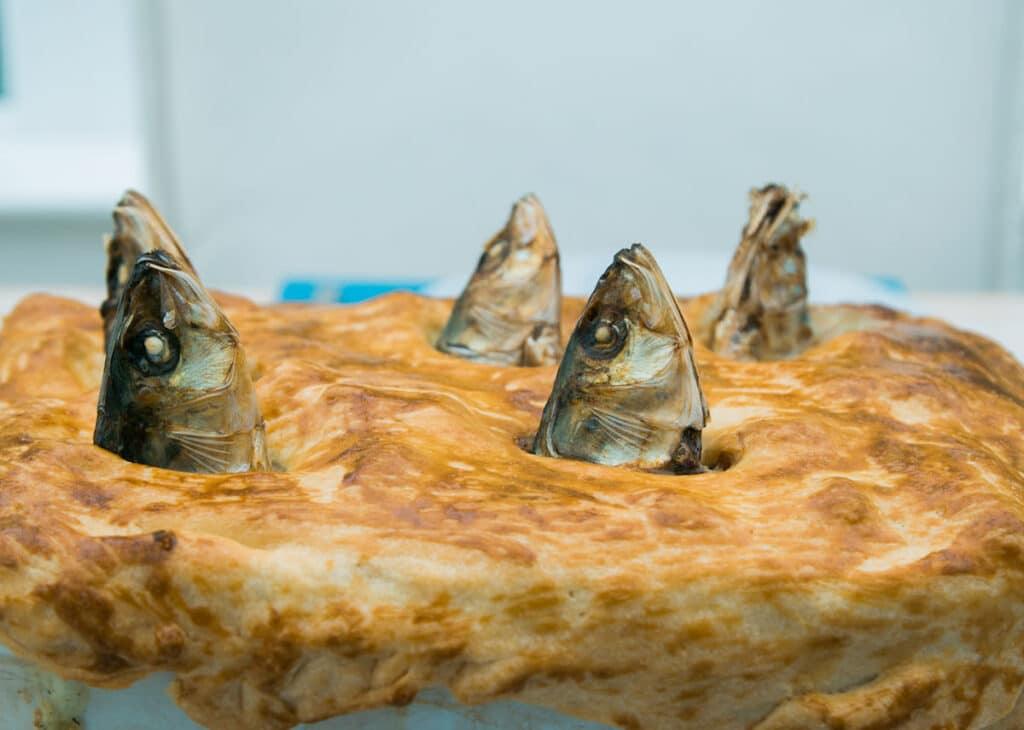
7. Tuna Eyeballs, Japan
When it comes to tuna in Japan, every single morsel is devoured – right up to their eyeballs. Enter our next weirdest foods: tuna eyeballs. Make sure you add them to your shopping list when you do a grocery store run because you can buy them cheap in local supermarkets. If you dare to try this fishy delicacy, you can find them on menus in restaurants across the country. Naturally, there are many different tuna eyeball recipes, but the easiest way to cook them is to boil or steam them, season with garlic or soy, and Bon Appetit! You might find it surprising that instead of tasting like tuna, this crazy food, tuna eyeballs actually taste a bit like squid.
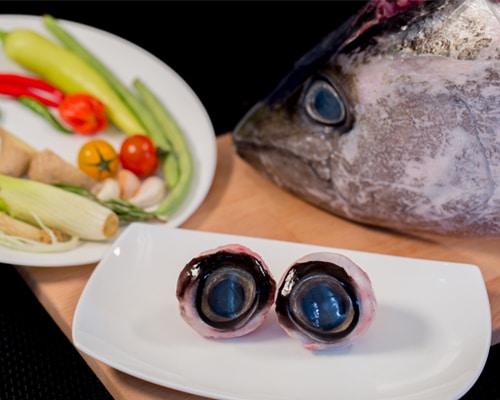
8. Balut, Philippines
Enter another egg delicacy: Philippines’ balut. What is balut? Well, it’s a fertilized egg – usually duck – that’s about two-three weeks into development, boiled alive and then eaten directly from the shell, seasoned with salt, chili, and vinegar. Embryo and all? Yes. Traditionally, you’re meant to tape a hole in the top, suck the savory liquid out, and then crunch down the rest of the developed egg – feathers, bones, and all.
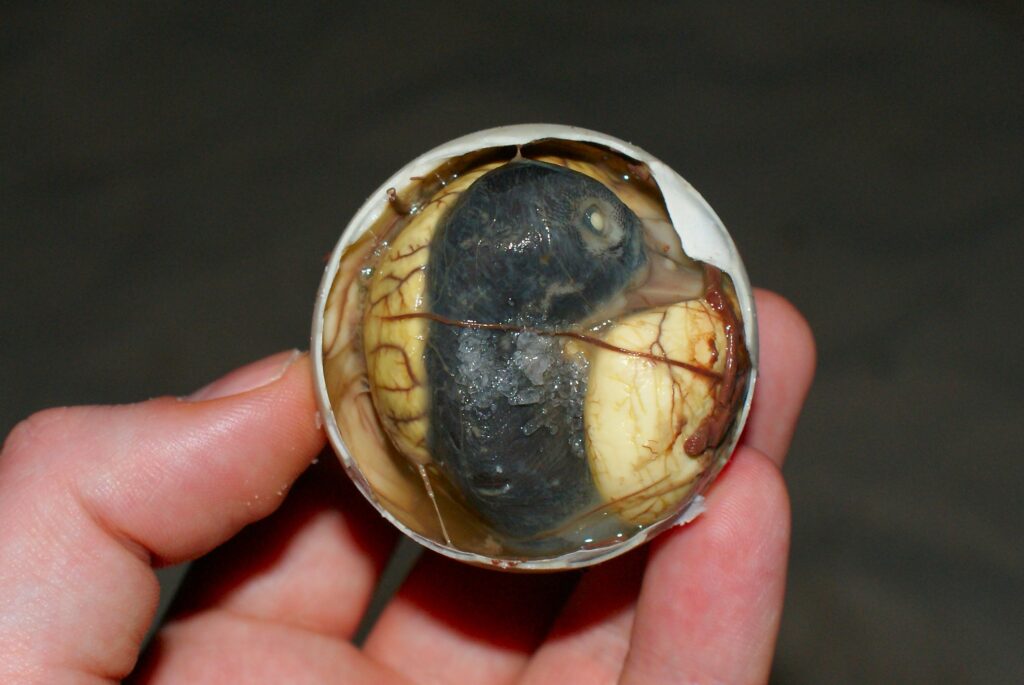
9. Huitlacoche, Mexico
Ever wanted to try corn fungus? Thought not. But you might change your mind after you try this weird food originating from Mexico. Huitlacoche, also known as corn smut or Mexican truffle, is a local delicacy that is actually a diseased corncob. The long and the short of it is that huitlacoche is made from a plant disease that grows on the ears of corn, around the kernels, in puffy, gray clouds. Highly regarded as a culinary specialty, this bizarre food apparently has a woody, earthy flavor from the fungus.
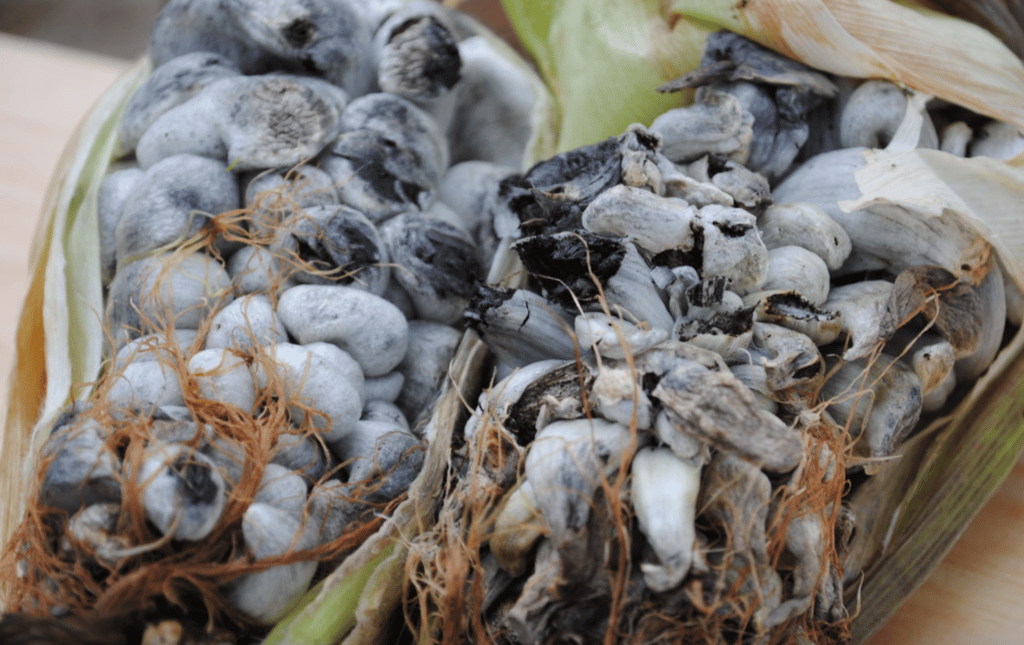
10. Surströmming, Sweden
You might not be able to even try this one out once you catch a whiff of this Swedish delicacy. Surströmming doesn’t sound so menacing; the lightly-salted fermented Baltic Sea herring has been a traditional staple in Swedish cuisine since the 16th century. But once you find out that surströmming means “sour herring” and has the smell to match, you might change your mind. While making this weird dish, just enough salt is used to prevent the raw herring from rotting while it ferments. At least six months later, and you can smell that herring before you see it. A newly opened can of surströmming has one of the most putrid food smells in the world. Never mind, eating this weirdest food, can you even stomach the odor?
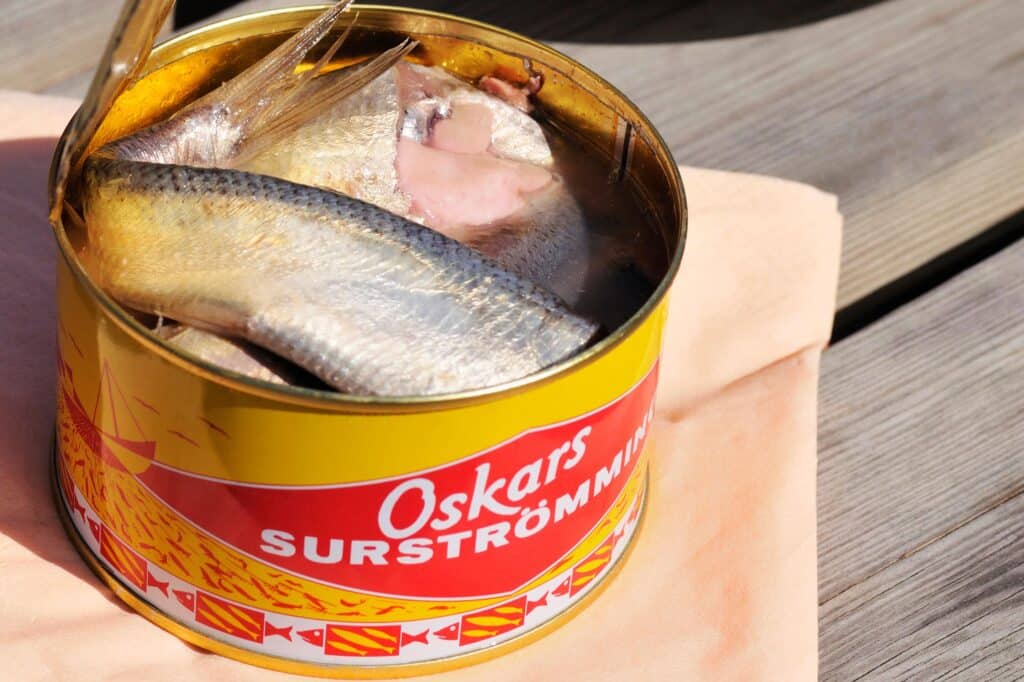
11. Hákarl, Iceland
Hákarl is a traditional Icelandic dish made from Greenland shark. The preparation process involves burying the shark meat in gravelly sand and pressing it with stones to ferment for several months. Afterwards, it is hung to dry for several more months. The result is a pungent, ammonia-scented delicacy that is often an acquired taste, best enjoyed by those with a strong stomach and a sense of culinary adventure.

12. Sannakji, Korea
This dish takes “playing with your food” to a new level. Sannakji is a delicacy in Korea that involves eating live octopus. The octopus is cut into small pieces while still alive and served immediately. The pieces continue to squirm on the plate, providing a unique and somewhat challenging eating experience. Diners need to be cautious as the suction cups can stick to the mouth or throat. Sannakji is appreciated for its fresh taste and chewy texture, often enjoyed with a dash of sesame oil.

13. Mopane Worms, South Africa
Mopane worms are the caterpillars of the Emperor Moth, widely eaten in Southern Africa. These worms are harvested, dried, and often fried to create a crunchy, protein-rich snack. They are considered a delicacy in many regions and are valued for their nutritional content. Despite their somewhat intimidating appearance, Mopane worms have a nutty flavor that many locals enjoy.

And there you have it, our list of 13 of the world’s weirdest foods. When it comes to weird foods, sometimes you just need to give it a bash – except maybe not the surströmming – there’s no need to try that one out. Enjoy your weird food and keep safe while travelling with the Air Doctor app.
How Air Doctor Can Help
Did you know if you need to find a doctor abroad you can use the Air Doctor app to find one – anywhere, anytime.
Air Doctor gives you:
- Access to over 20,000 multi-lingual doctors worldwide
- Choice of clinic, at-home (hotel), and video visits
- Local, valid prescriptions through our cross-border services
- Quality medical care, including urgent visits
- 24/7 multi-lingual customer support
- Video consultation services in up to 21 languages
- Partnered with leading insurance providers
Download the app, just in case.











